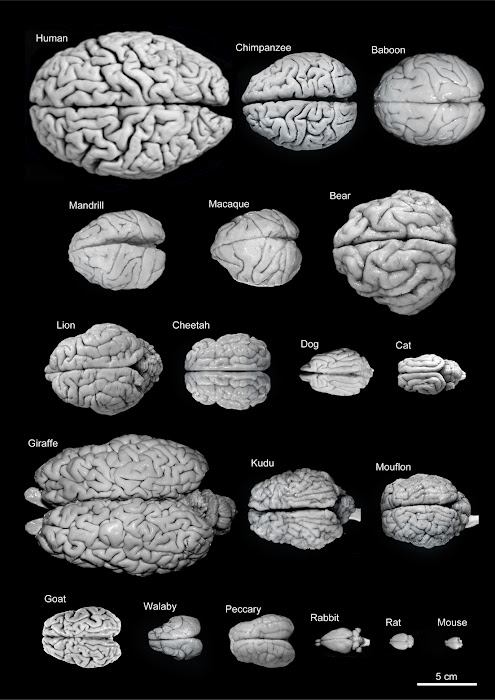Картинка на память


Человек (Homo sapiens, 1.176 kg), шимпанзе (Pan troglodytes, 273 g), бабуин (Papio cynocephalus, 151 g), мандрил (Mandrillus sphinx, 123 g), макак (Macaca tonkeana, 110 g), медведь (Ursus arctos, 289 g), лев (Panthera leo, 165 g), гепард (Acinonyx jubatus, 119 g), собака (Canis familiaris, 95 g), кошка (Felis catus, 32 g), жираф (Giraffa camelopardalis, 700 g), лесная антилопа (Tragelaphus strepsiceros, 166 g), дикий баран/муфлон (Ovis musimon, 118 g), горный козёл (Capra pyrenaica, 115 g), кенгуру (Protemnodon rufogrisea, 28 g), дикая свинья (Tayassu pecari, 41 g), кролик (Oryctolagus cuniculus, 5.2 g), крыса (Rattus rattus, 2.6 g), мышь (Mus musculus, 0.5 g).

To conclude, the human cerebral cortex is unique in many aspects and it is likely that as more detailed studies are carried out on human cortical circuits, we will discover many more differences at the genetic, molecular, structural, and physiological levels between humans and other species. Thus, not only the increase in size, and therefore in complexity, of our brains seems to be responsible for our higher or more abstract mental abilities but also, the specialization of our cortical circuits appears to be critical. -- “The evolution of the brain, the human nature of cortical circuits, and intellectual creativity”